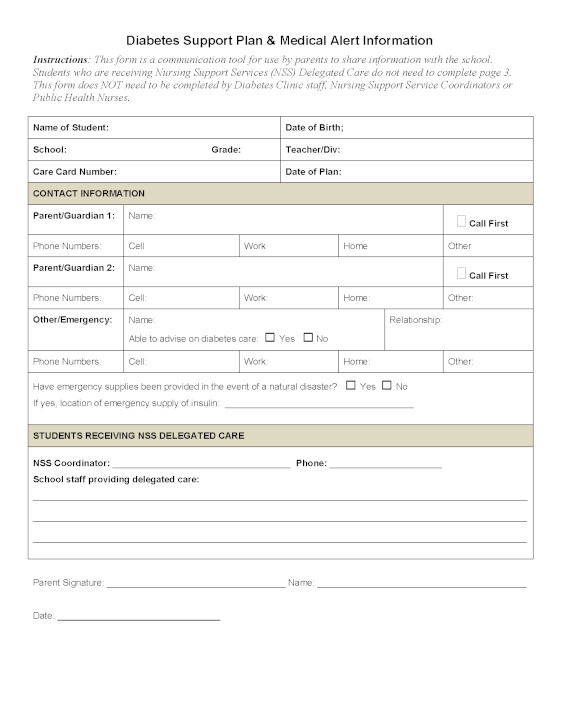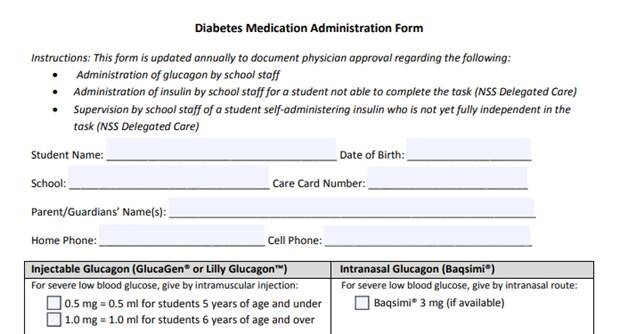2. Diabetes in School
-
Type 1 Diabetes: The Basics for Teachers and School Staff
Video(s) used with permission of the Canadian Paediatric Society (CPS) on behalf of Diabetes@School, a partnership of the CPS, Diabetes Canada, and the Canadian Pediatric Endocrine Group. For more information, visit www.diabetesatschool.ca (March 2022)
-
Diabetes Support Plan
This document is a communication tool between the student, their family and the school. It outlines how school staff should assist the student with their diabetes management.
Some students will be able to independently manage all or almost all of their non-emergency diabetes care. Other students might need reminding to ensure a task is completed.
The Nursing Support Services team is involved in the care of certain students with Type 1 Diabetes at school.
In order to ensure a safe school environment, if you work with a child who has Type 1 Diabetes, you should be aware of their Diabetes Support Plan so you can properly respond if they require your assistance.
-

Diabetes Support Plan Example
Refer to the Government of BC website or specific school district process for the most up to date support plan and associated documents.
-

Glucagon
Glucagon is a medication (hormone) that is used to treat severe low blood sugar for Type I Diabetes.
Parents/guardians who wish to have glucagon administered at school need to have a Diabetes Medication Administration Form completed and signed by the student’s physician
Designated school staff will be trained to administer glucagon if requested by parent or guardian.
Your school administrator will arrange this training.
-
Considerations for Students with Type 1 Diabetes
With planning and support, students with diabetes can participate fully and safely in all school activities, including sports. Daily physical activity has health benefits and helps with blood sugar management.
Students with diabetes need the following anywhere, any time during the school day:
(Click below for more information)
Unrestricted Access to Emergency SnacksUnrestricted Access to Emergency Snacks
to prevent or treat low blood sugar. Students need to able to eat all snacks and meals on time and be provided with adequate time to finish their food.
Access to their Diabetes Equipment (may include the student’s cell phone)Access to their Diabetes Equipment (may include the student’s cell phone)
and being able to check their blood sugar. If preferred by the student, a private location for them to do blood sugar monitoring must be provided.
To Respond to the Results of their Blood SugarTo Respond to the Results of their Blood Sugar
reading, and be able to contact their parents as needed to manage their diabetes.
Be Allowed Unrestricted Access to the WashroomBe Allowed Unrestricted Access to the Washroom
because high blood sugars can increase thirst and the need to urinate.
-